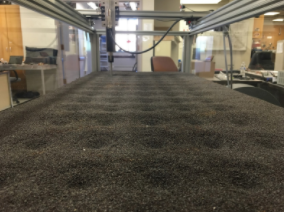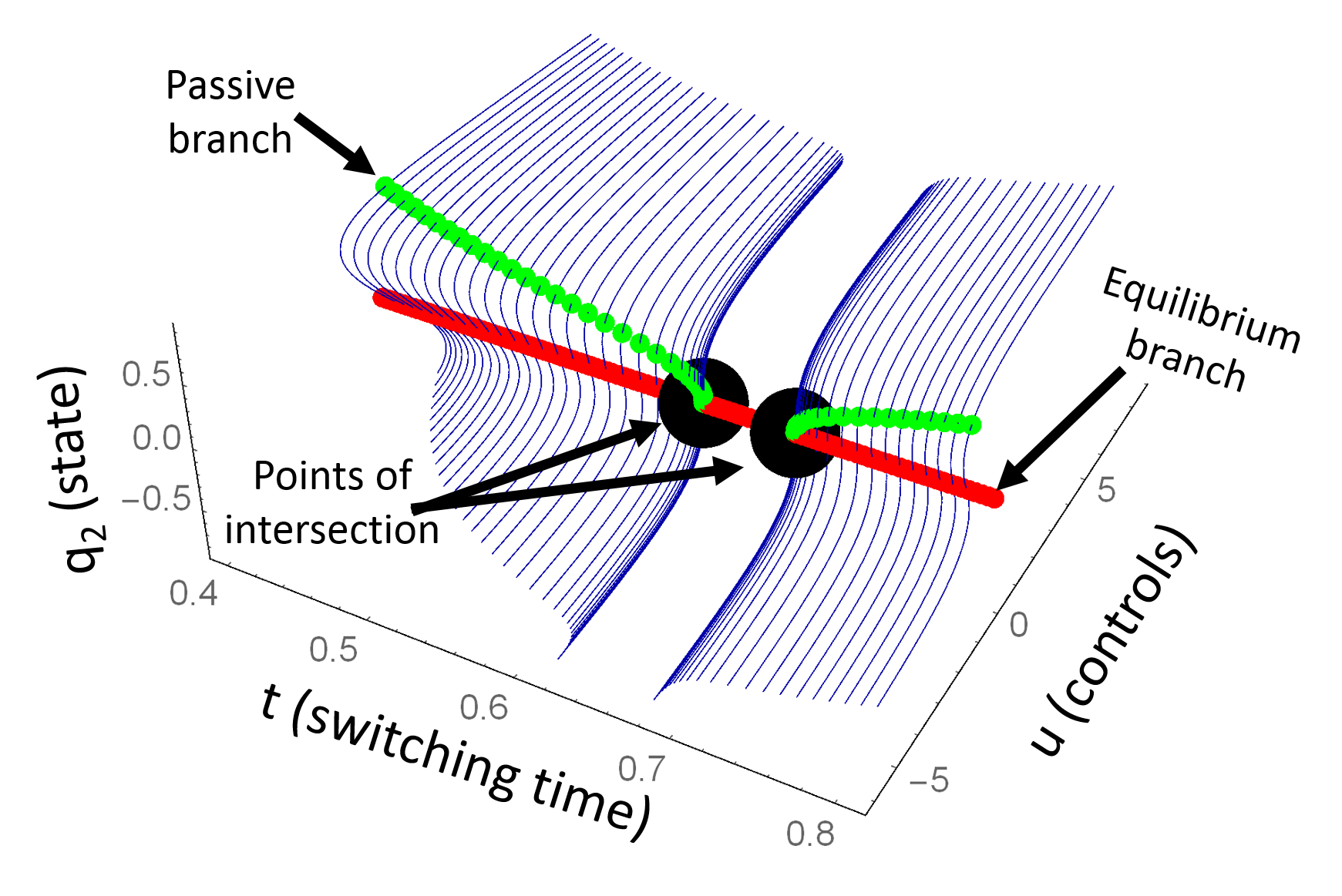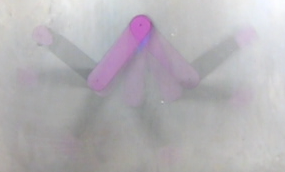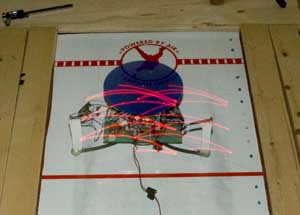Dynamic Locomotion
Project Overview
Animals, including humans and apes, have demonstrated impressive agility in traversing obstacles by intelligently exploiting contact forces in their environment. Studying the mechanics and planning behind their dynamic forms of locomotion can yield a simpler, more elegant, and more agile style of robotic locomotion in challenging environments.
In advancing the state-of-the-art, our work currently focuses on hybrid mechanical systems that undergo impulsive effects (e.g. the dynamics of a bouncing ball). Robots that walk, hop, or brachiate fall within this class of mechanical systems. The goal of our work is to produce theoretical tools for planning, control, and estimation of these robots allowing them to move dynamically (e.g. acrobatically, aggressively, nimbly, quickly, etc.) in their environment. A major challenge is dealing with the nonsmooth equations of motion where traditional solution methods for problems in planning, control, and estimation may not apply.
Learn more about the related research projects:
Dynamic Locomotion: on Yielding Terrain
 Locomotion on soft ground is explored using a one-legged robot jumping on a tunable model substrate generated with a fluidized bed filled with granular material.
Locomotion on soft ground is explored using a one-legged robot jumping on a tunable model substrate generated with a fluidized bed filled with granular material.
Dynamic Locomotion: Gait Generation for Underactuated Hybrid Systems
 We present a method for generating gaits for multi-degree-of-freedom, underactuated robots with hybrid dynamics in a unified and extensible framework.
We present a method for generating gaits for multi-degree-of-freedom, underactuated robots with hybrid dynamics in a unified and extensible framework.
Dynamic Locomotion: The Gibbot
 The Gibbot is a dynamic climbing robot developed for experimental validation of estimation and control of hybrid mechanical locomotion systems.
The Gibbot is a dynamic climbing robot developed for experimental validation of estimation and control of hybrid mechanical locomotion systems.
Dynamic Locomotion: ParkourBot
 Inspired by the flexibility of parkour, Carnegie Mellon University, in collaboration with Northwestern University, developed the ParkourBot, a dynamic climbing robot equipped with two springy BowLegs.
Inspired by the flexibility of parkour, Carnegie Mellon University, in collaboration with Northwestern University, developed the ParkourBot, a dynamic climbing robot equipped with two springy BowLegs.
People
Kevin M. Lynch
Nelson Rosa
Andy Long
Adam Barber
Daniel Lynch
Related Publications
Using Equilibria and Virtual Holonomic Constraints to Generate Families of Walking Gaits, Dynamic Walking Conference, Mariehamn, Finland, 06/2017/ 2017 Google Scholar PDF
Extending Equilibria to Periodic Orbits for Walkers using Continuation Methods, 2014 IEEE/RSJ International Conference on Intelligent Robots and Systems, 2014 Google Scholar PDF
Open-loop Stability of Time-based vs. Event-based Switching in Locomotion, Dynamic Walking Conference, 2013 Google Scholar PDF
The Passive Dynamics of Walking and Brachiating Robots Results on the Topology and Stability of Passive Gaits, International Conference on Climbing and Walking Robots, 2013 Google Scholar PDF
Stable open-loop brachiation on a vertical wall, Robotics and Automation (ICRA), 2012 IEEE International Conference on, IEEE, pp. 1193-1199, 2012 Google Scholar
The ParkourBot-a dynamic BowLeg climbing robot, Robotics and Automation (ICRA), 2011 IEEE International Conference on, IEEE, pp. 795-801, 2011 Google Scholar
Optimal motion planning for a class of hybrid dynamical systems with impacts, Robotics and Automation (ICRA), 2011 IEEE International Conference on, IEEE, pp. 4220-4226, 2011 Google Scholar
The Simplest Parkour Model Modeling, Experimental Validation and Stability Analysis, International Conference on Climbing and Walking Robots (CLAWAR), Paris, France, 2011 Google Scholar
Back to top